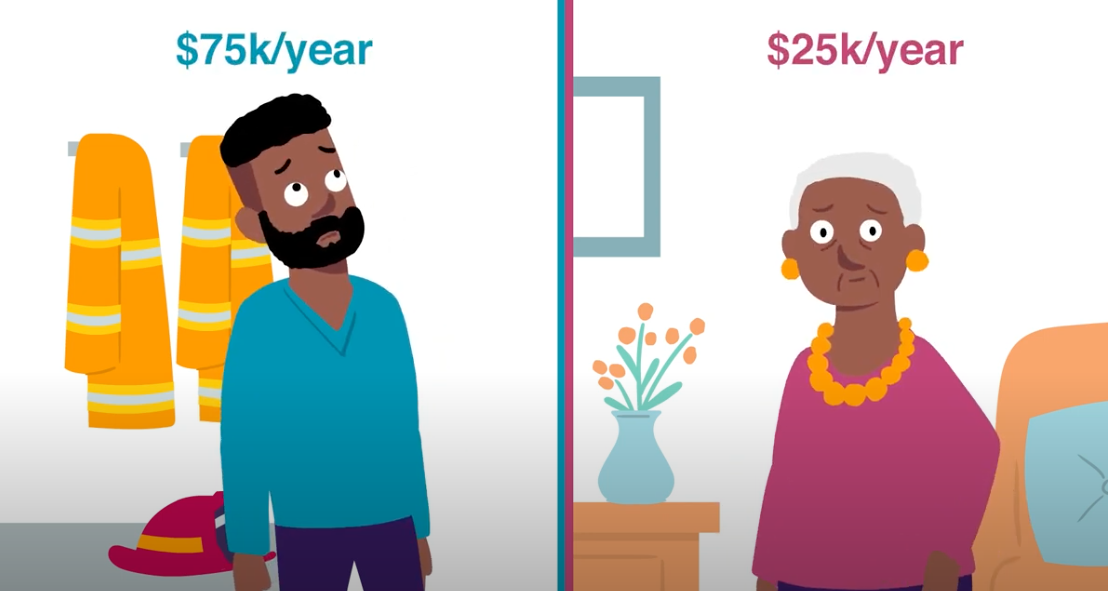NEWS: Animated Video Explains Affordable Housing

New Educational Video: “What Is ‘Affordable’ Housing?”
Animation from California YIMBY Explains Subsidized and “Naturally” Affordable Housing
“They earn too much for housing subsidies, but not enough to find a home they can afford”
Click here to watch and share the video
SACRAMENTO – A new animated, educational video released today by California YIMBY explains the challenges middle-income workers face finding housing they can afford, and how that “naturally” affordable housing is distinct from subsidized housing provided to seniors and low-income tenants.
The video ends with a call for Californians across the state to join the YIMBY movement to make it legal to build both types of housing — both subsidized housing, and naturally-affordable housing — in the state’s cities.
Click here to watch and share the video
The video focuses on a fictional firefighter, Michael, and his grandmother, Iris. Michael has a job with a good salary, and Iris is on a fixed income; but California’s housing shortage has led to an affordability crisis — which means neither of them can find housing they can afford.
“Michael and Iris are typical Californians whose housing struggles should be familiar to everyone,” said Melissa Breach, Vice President and COO of California YIMBY. “The housing shortage is so acute that even middle-income workers making close to six figures can’t afford to live here, let alone seniors on fixed incomes. We need more homes for all the Michaels and Irises, and that means both market-rate and subsidized affordable housing.”
Within the housing policy community, “affordable housing” has a specific meaning: Housing that receives some form of subsidy from local, state, and/or the federal government. There are numerous types of subsidized affordable housing, but the common feature is it is only made available to residents whose incomes are below a certain level.
While tens of thousands of Californians live in subsidized affordable housing, there is not nearly enough to satisfy demand. A shortage of available units, and a related shortage of subsidies, means that in most California cities, waiting lists for subsidized affordable housing are usually five to 10 years long.
This same phenomenon impacts California’s middle-income workers, whose salaries are relatively high by American standards, but still insufficient to compete in a housing market that has been largely shut down by local governments who make it illegal to build more homes. As competition for limited housing heats up, these workers are left with no options; they make too much money to qualify for housing subsidies, but not enough to find a home they can afford to rent or purchase.
Click here to watch and share the video
“We need to make it legal to build more homes in our cities — both subsidized affordable housing, and multi-family, market-rate housing — in order to end the housing shortage that has created the affordability crisis,” Breach said. “Right now, it is still illegal to build this type of housing on 75% of our urban land. That has to change.”
The affordable housing video was a collaborative production of California YIMBY and Ruben DeLuna Creative, a production company based in Austin, Texas. DeLuna’s past creative credits include well-known activist videos like the “Story of Stuff” and other cause-related videos like criminal justice reform, women’s rights, better access to education for girls, and progressive financial reform.
“I’ve created videos for a number of progressive causes over the years, so I was excited by the opportunity to work with California YIMBY on a video about the housing shortage,” said Ruben DeLuna, owner and principal with Ruben Deluna Creative. “Animation is a great medium to help people understand systemic problems, and affordable housing is an issue I was eager to tackle.”
Click here to watch and share the video